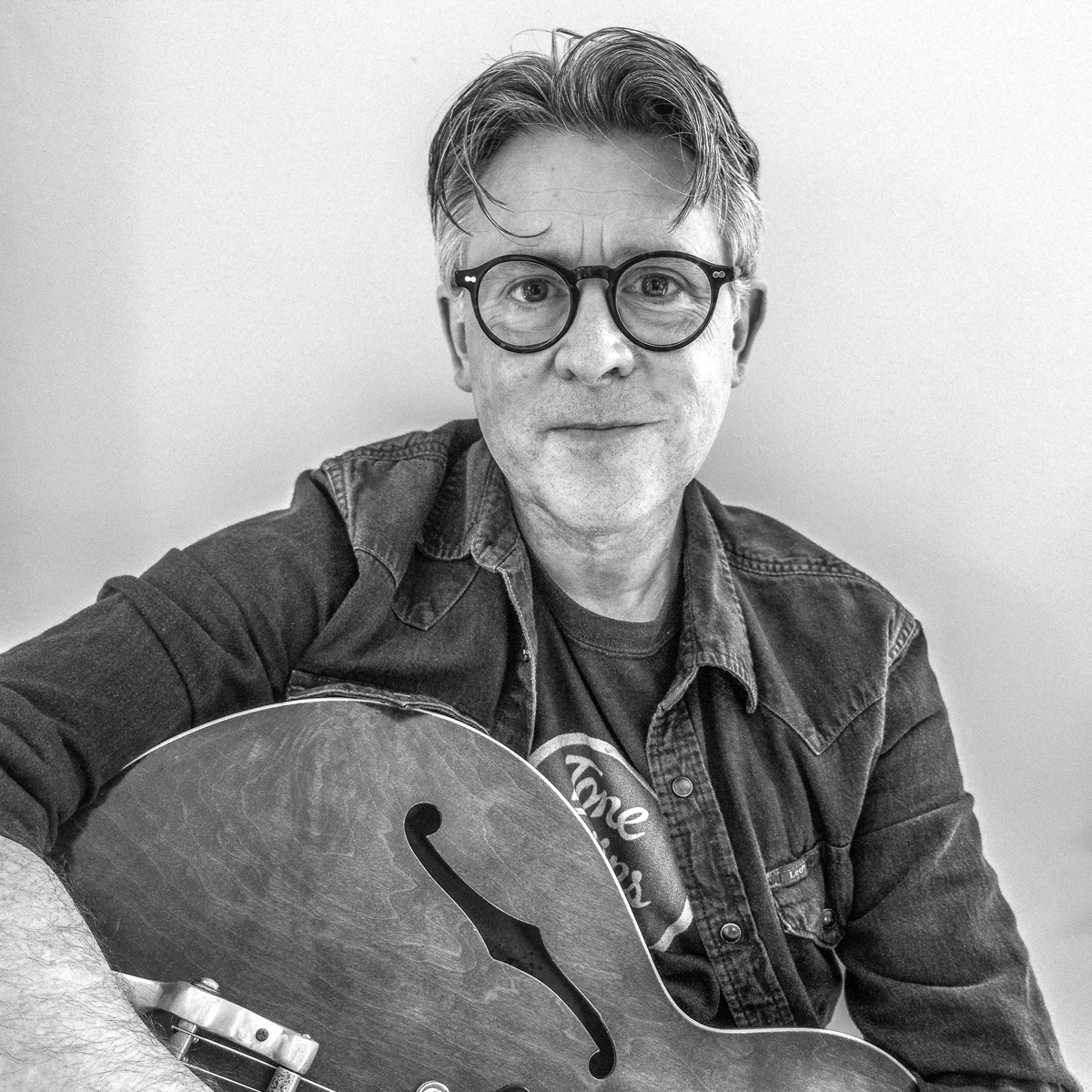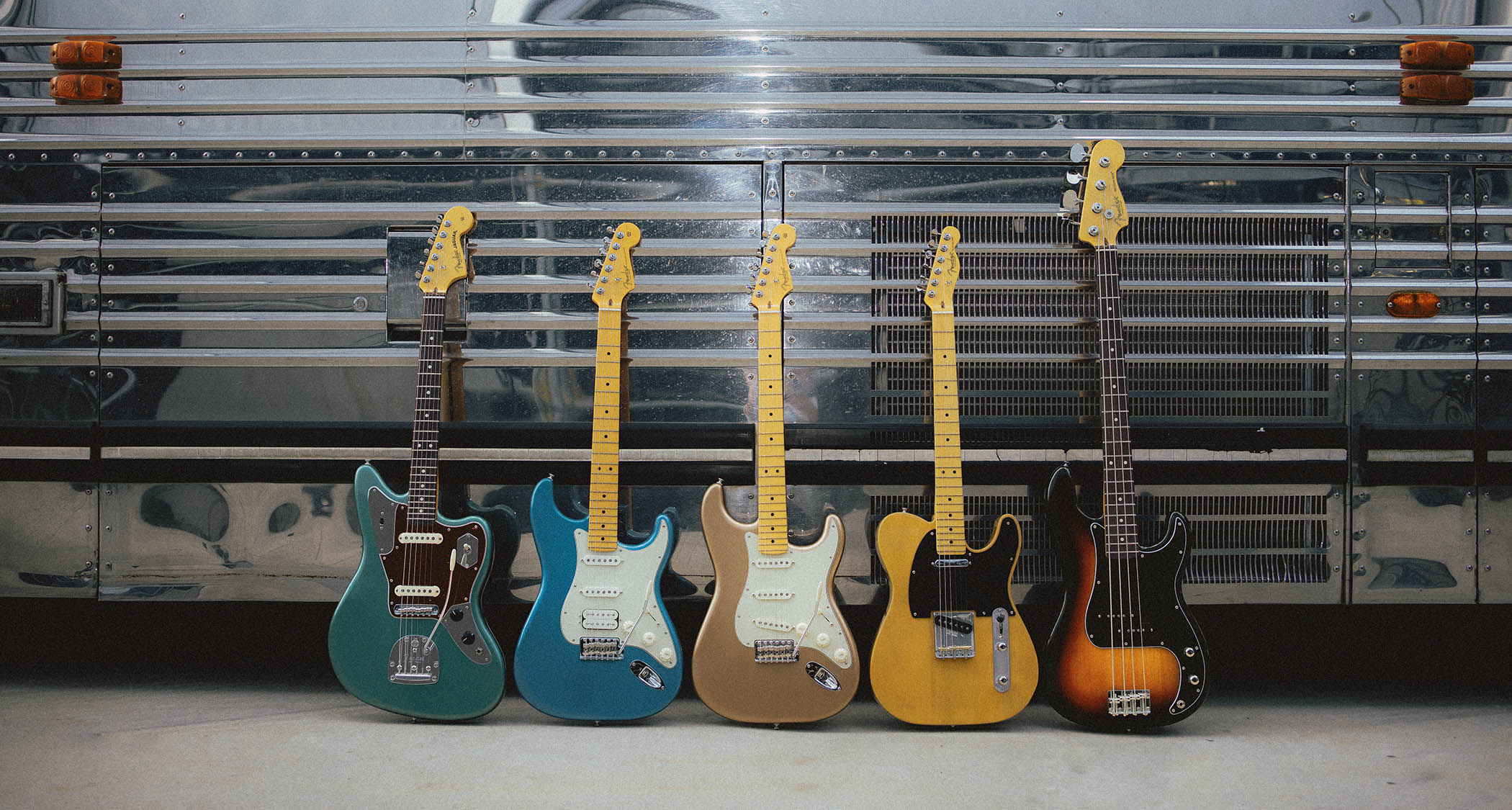“Countless Zoso wannabes have tried to decipher Jimmy Page’s tone secrets”: Hands-on with the ultimate Led Zeppelin amps – Sundragon’s painstakingly accurate replicas of the guitar hero’s elusive backline
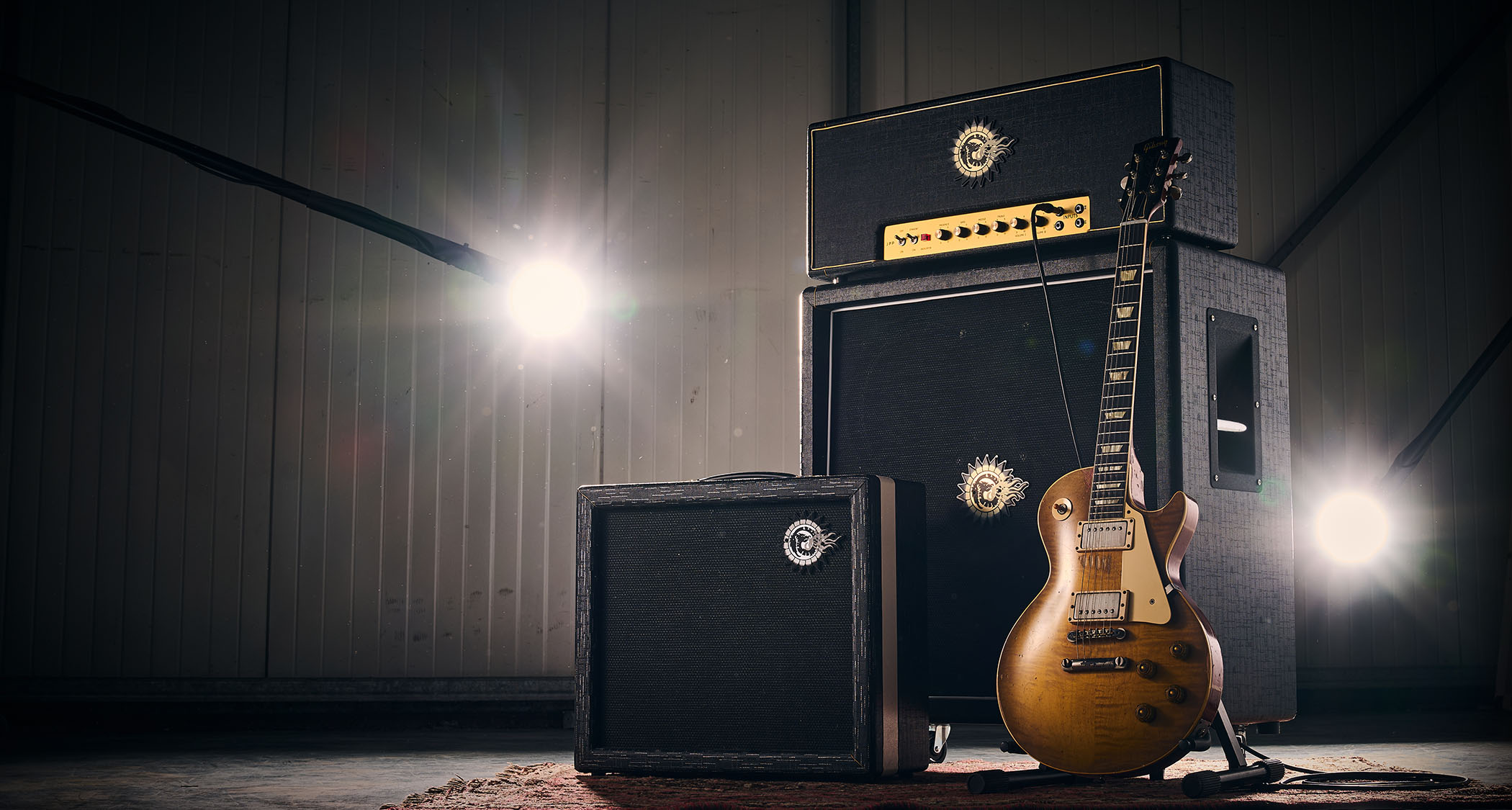
There is a time in most guitarists’ development when they become fixated on replicating the tones of their favourite players.
In pre-internet times we might have searched for snippets of information about guitars, amplifiers and effects in magazine interviews or scrutinised grainy video footage for clues. This later evolved into sifting through interminable newsgroup discussions while trying to distinguish between nuggets and nonsense.
Those innocent times had an aura of mystery, and artists could often be evasive. Few bands could match Led Zeppelin’s mystique, and countless Zoso wannabes have tried to decipher Jimmy Page’s tone secrets. His favourite guitars are now well documented, the trick wiring in his Les Pauls has been unravelled, and his fuzz favourites have been analysed down to component level.
The only remaining bone of contention was his Zeppelin-era amplifiers, but it’s now widely known that two of Jimmy’s most favoured amps were a 100-watt Marshall Super Bass and a Supro. Both were modified and, until relatively recently, there was uncertainty about which Supro model he used.
That changed in 2019 when Jimmy agreed to the amp, along with several guitars and stage gear, being included in the Metropolitan Museum of Art’s ‘Play It Loud: Instruments of Rock & Roll’ exhibition. It was subsequently displayed at the Rock & Roll Hall Of Fame, and the mystery Supro turned out to be a modified 1959 Coronado 1690T.
Chasing The Dragon
Guitar collector, studio owner and vintage guitar mover and shaker Perry Margouleff was involved in curating the exhibition, and he happens to be friends with Jimmy Page. Naturally, he was keen for Jimmy’s 1959 Telecaster to be included because it was used for Zeppelin’s first album and featured in so many early concert clips.
Jimmy had mixed feelings because, decades earlier, while he was away on tour, a house-sitting acquaintance had stripped the hand-painted dragon off the body. Perry suggested that Jimmy should consider restoring the guitar and he eventually did so with help from Fender. The restored guitar ended up in the exhibition and Fender released a replica.
All the latest guitar news, interviews, lessons, reviews, deals and more, direct to your inbox!
It occurred to Perry that the Supro amp was so closely associated with the ’59 Telecaster that it should be reissued, too. This is when amp builder and former executive vice president of Korg, Mitch Colby, came onboard. Mitch had previously done some amp restoration work for Jimmy and he and Perry set about analysing Jimmy’s Supro to determine what gave it such a unique tone.
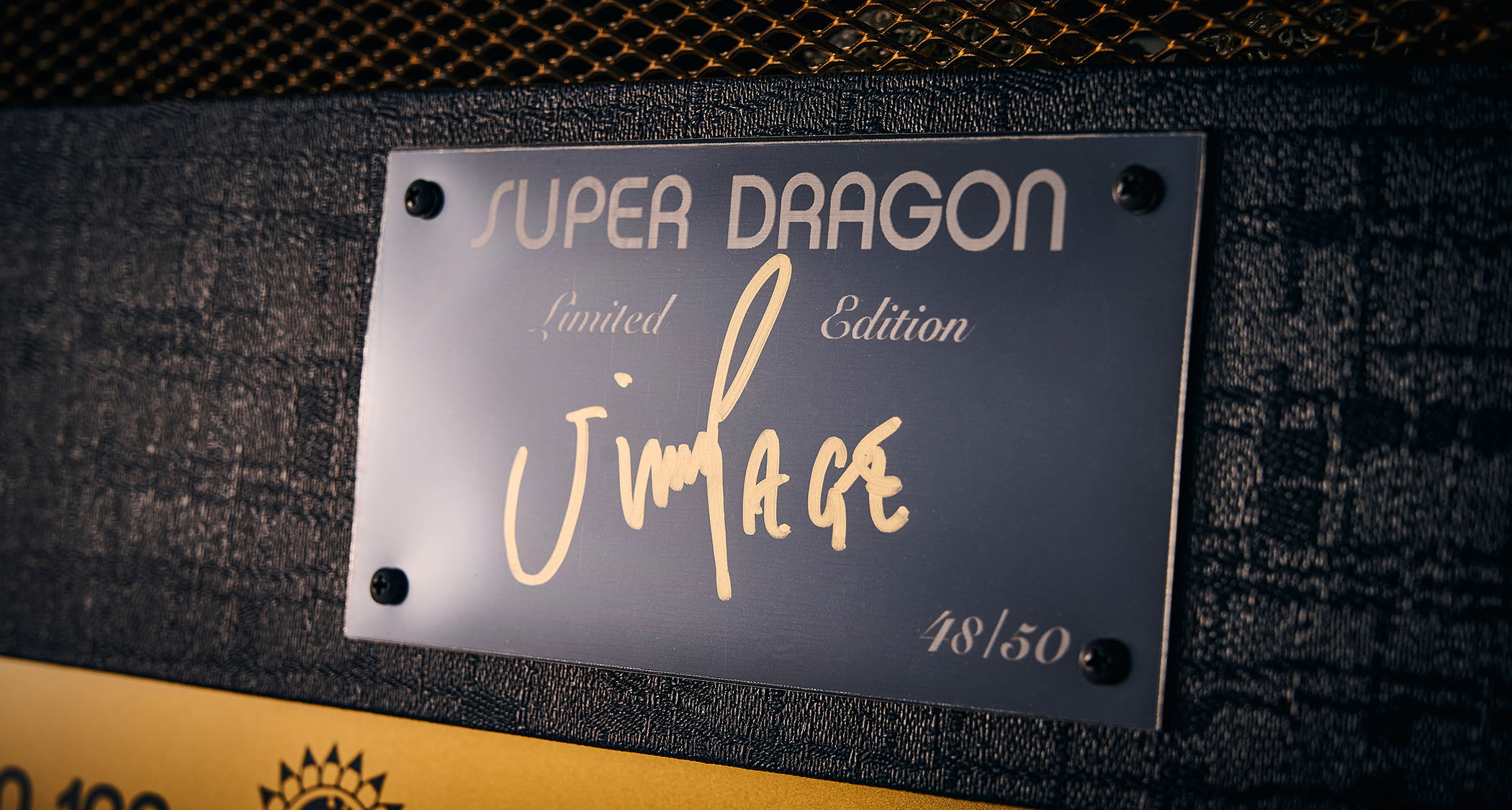
During the early 1960s Jimmy had taken his Supro on tour with Neil Christian & The Crusaders and it sustained damage when it fell out of the van. After some running repairs, the Supro was taken to a local tech who fixed it up using components that were available in the UK during that time.
When Jimmy sent his Supro over to Mitch’s workshop, Perry and Mitch discovered that the preamp valves were Mullard ECC83s and the 6L6 power valves were made by General Electric. The Mullard GZ34 that had replaced the stock 5R4 rectifier had also bumped up the B+ voltage.
Mitch was able to go through the circuit and identify components that had drifted out of tolerance but were contributing to the tone
The Supro would have had two 10-inch speakers, but the repairer installed a new baffle for a single 12-inch Oxford Alnico speaker. This had been repaired with a non-original Pulsonic cone with a smaller-diameter voice coil than the Pulsonics commonly used in Celestions.
While he had the amp, Mitch was able to go through the circuit and identify components that had drifted out of tolerance but were contributing to the tone. He was also able to tell that Jimmy’s onboard step-down transformer gave out 120 volts of mains voltage, rather than the 110 volts the Supro was designed for.
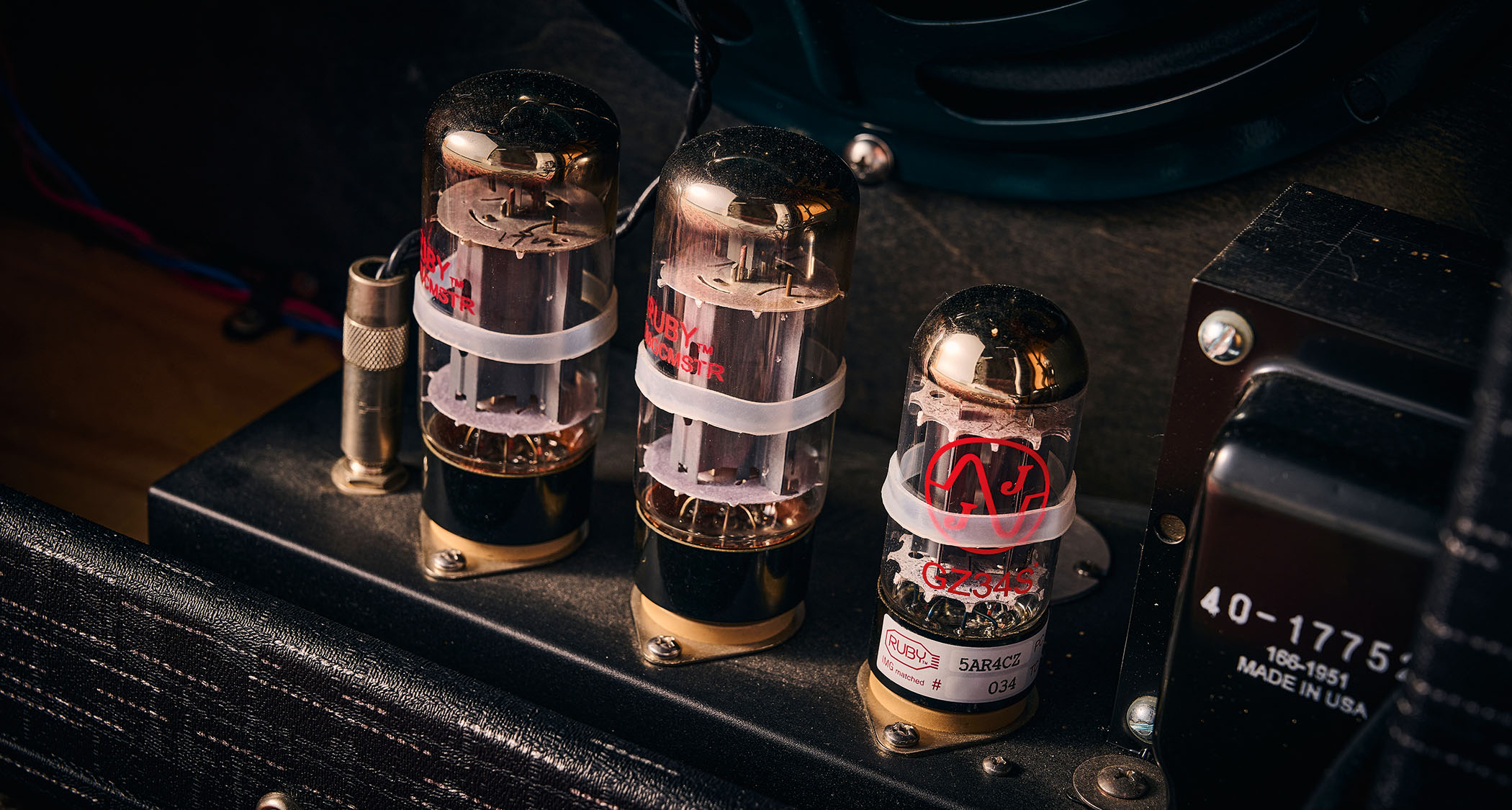
Through a combination of circuit analysis and careful listening tests, Mitch and Perry were able to modify a vintage Supro Coronado 1690T belonging to Perry to sound exactly like Jimmy’s. The speaker presented difficulties because the manufacturers of Oxfords and Pulsonics had both ceased trading. After extensive testing, they discovered a current production Jensen P12Q was the closest match.
Once Jimmy had given his nod of approval, they all banded together to form a company called Sundragon Amplifiers to produce their replica of Jimmy’s Supro. A limited-edition run of 50 amps was made with New Old Stock electronic components and valves, and each one was signed by Jimmy himself. Despite a $12,500 price tag, they all sold in two days.
After this, Sundragon began offering a ‘budget’ version with selected JJ valves and modern components. The transformers from Jimmy’s amp were sent to the original manufacturer for analysis and they were able to recreate them. Retailing at $3,875, this is the version we’re trying out.
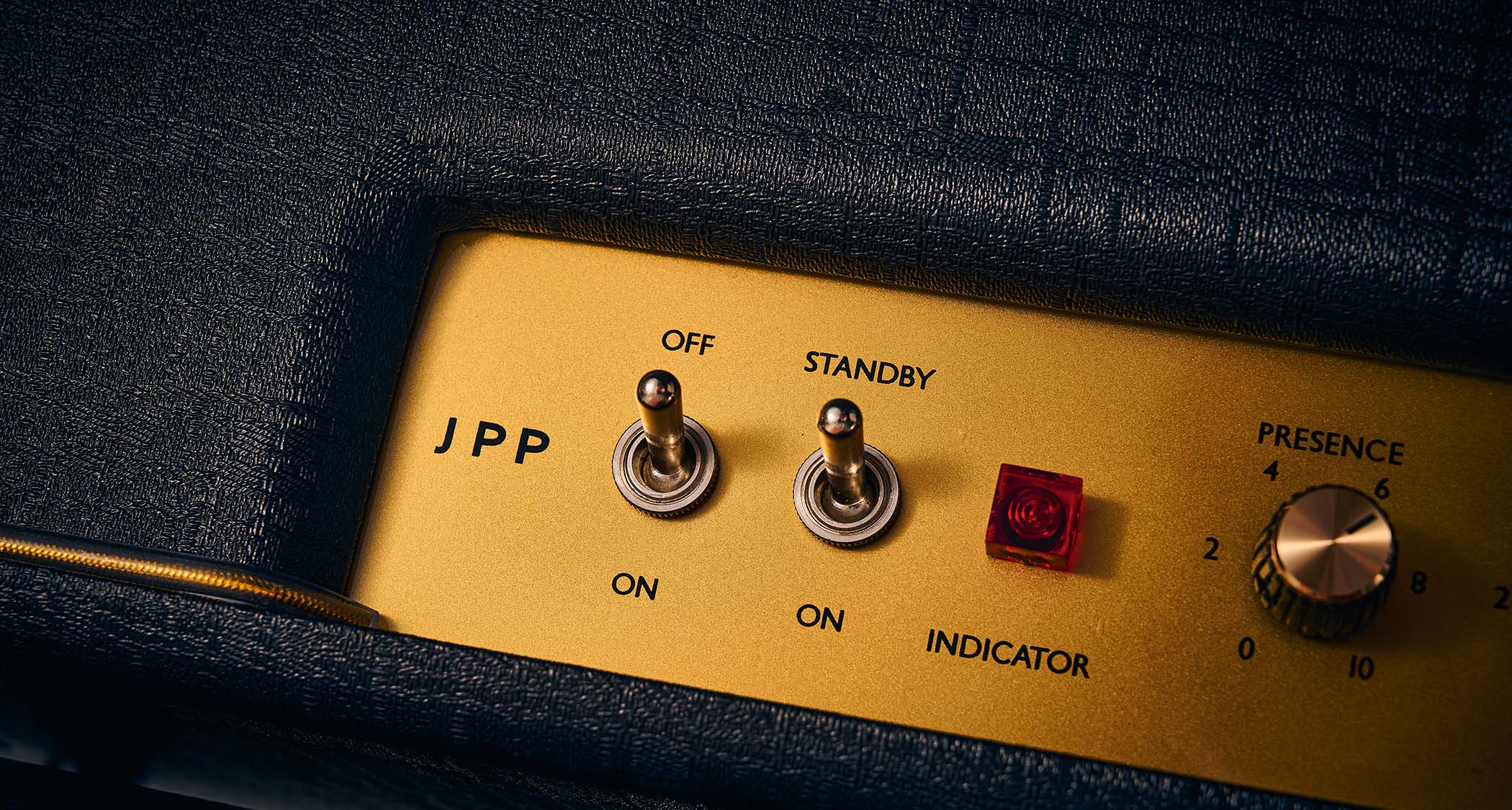
O Suproman
The cabinet shape, control panel and mix of large, rounded pointer knobs and smaller tremolo knobs all capture the vintage Supro spirit. The covering and handle are in keeping, rather than vintage-accurate, but the split amp sections, with the preamp at the top and the power amp on the bottom of the cabinet, are faithful to the originals.
Each of the two channels has dual inputs and a dedicated volume control. The tone control is shared, and the tremolo channel has speed and intensity controls, with the former doubling up as an on/off switch. There’s also a top mounted socket for a tremolo footswitch, along with a three-way power switch for on/off/standby modes.
A paraphase inverter feeds a pair of cathode biased 6L6 power valves, and the tremolo is applied to the cathode of the tremolo channel’s first amplification stage. But one feature that sets the Supro circuit apart is the way that the inputs are configured.
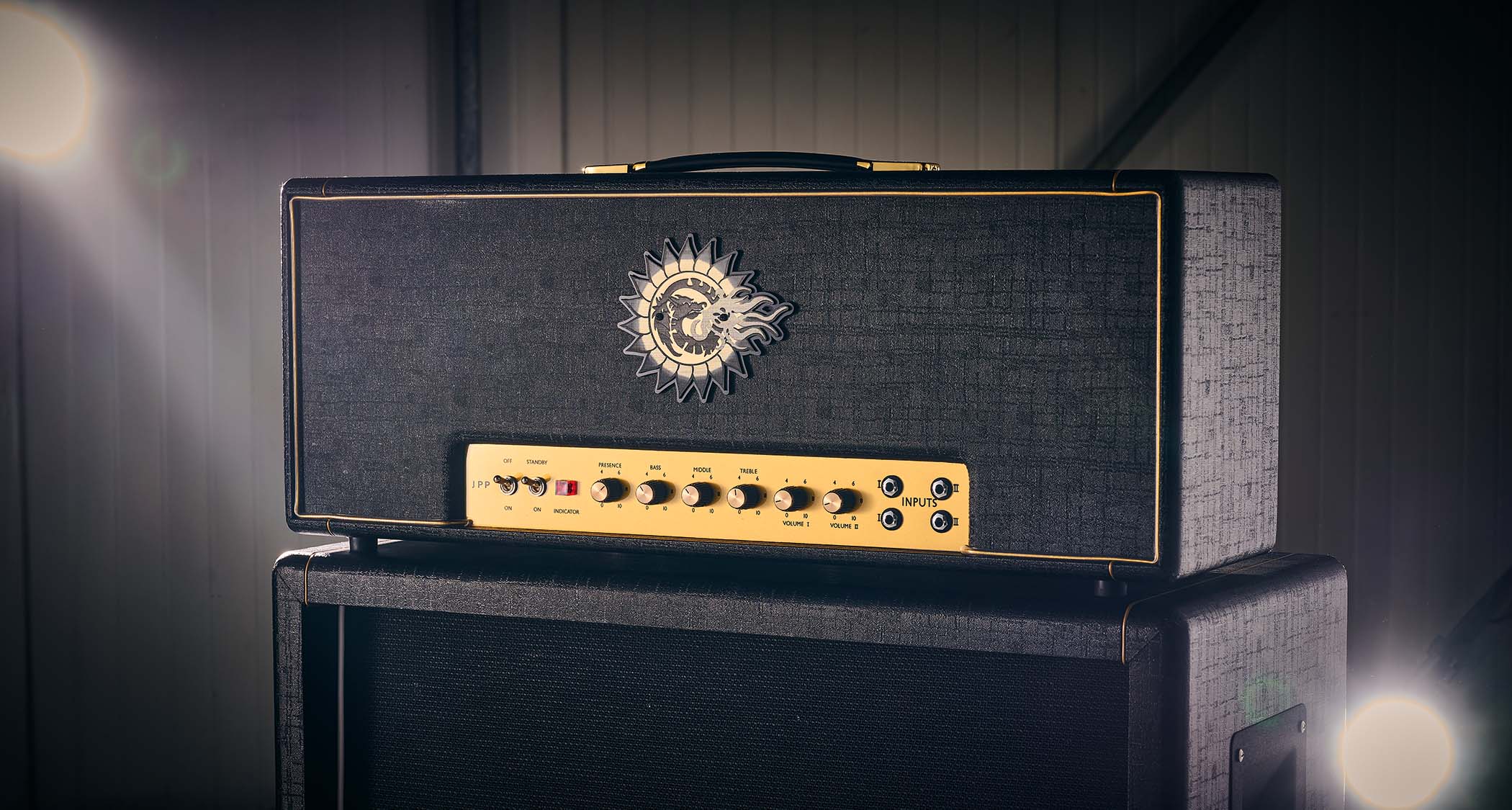
Supro inputs are labelled Treble/Normal and that’s a fair description of their sounds. As Mitch Colby describes it: “One input is full and the other has a little more top-end with a cut in the bass. Both channels are voiced differently, and the tremolo channel has less bass than the other. Jimmy said he used all four inputs when he recorded Zeppelin’s first album.”
Another difference is that the input jack signal connections don’t short to ground when there’s no cable plugged in. Most manufacturers ground unplugged inputs to minimise noise, but the Sundragon’s input wiring is true to the original.
In use, there are distinct differences between the two channels. Channel 1 has the purer sound and overdrive increases gradually. Beyond a quarter turn it doesn’t become that much louder but instead gets more compressed and saturated. There’s a tweed-like interaction between the volume and tone controls, with higher tone settings sounding more gainy as well as brighter.
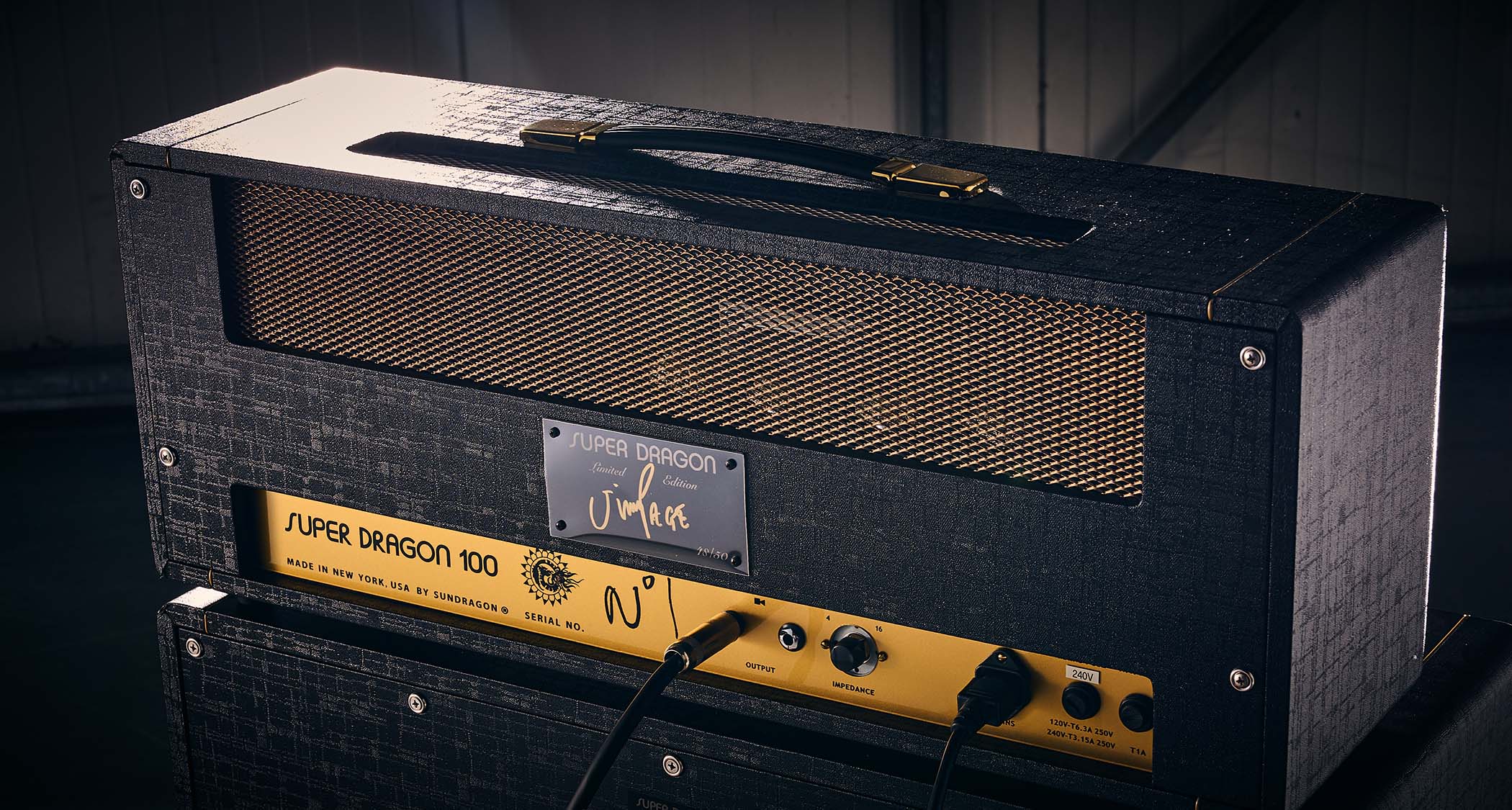
The tremolo channel sounds less clear, a bit more ragged and raw. It provides a useful contrast with the bluesy, expressive and vocal characteristics of Channel 1.
Even flat out the Sundragon has little in common with the raspy and fuzzy ferocity of a 5E3 Deluxe and instead allows the natural tone of a guitar to come through
Even flat out the Sundragon has little in common with the raspy and fuzzy ferocity of a 5E3 Deluxe and instead allows the natural tone of a guitar to come through with the bass end holding together well.
The tremolo isn’t the swampiest, but it has a very useful speed range that generates a thick pulse at lower frequencies and graduates to a ‘Bang Bang’ flutter at full speed. There’s ample intensity, but it never swallows the front of notes and always remains playable.
The Sundragon delivers all its goods at volume levels that are comfortable even in close proximity. It’s easy to imagine ’60s studio engineers sighing with relief when Jimmy rocked up to sessions with his Supro because he would have been so easy to mic up, and spillage would have been manageable.
Super Sizing
Given the close association with Jimmy Page, it’s hardly surprising that Sundragon has also recreated his other iconic amplifier: a 100-watt Marshall Super Bass that remained his studio and stage favourite from 1969 onwards.
Jimmy described it as, “the main one I would play all the way through my career. It was just the best amp I’d ever had… and it was so roadworthy. It did all those Led Zeppelin tours and all the recordings.”
Given that it was a standard production model from an amp industry giant, most guitarists will be more familiar with the basic specs of a Marshall than a Supro. Of course, things are never that simple because very soon after he acquired it Jimmy had the amp ‘hot-wired’. He took Jeff Beck’s advice and employed a US tech called Tony Frank who had also worked on Hendrix’s amps.
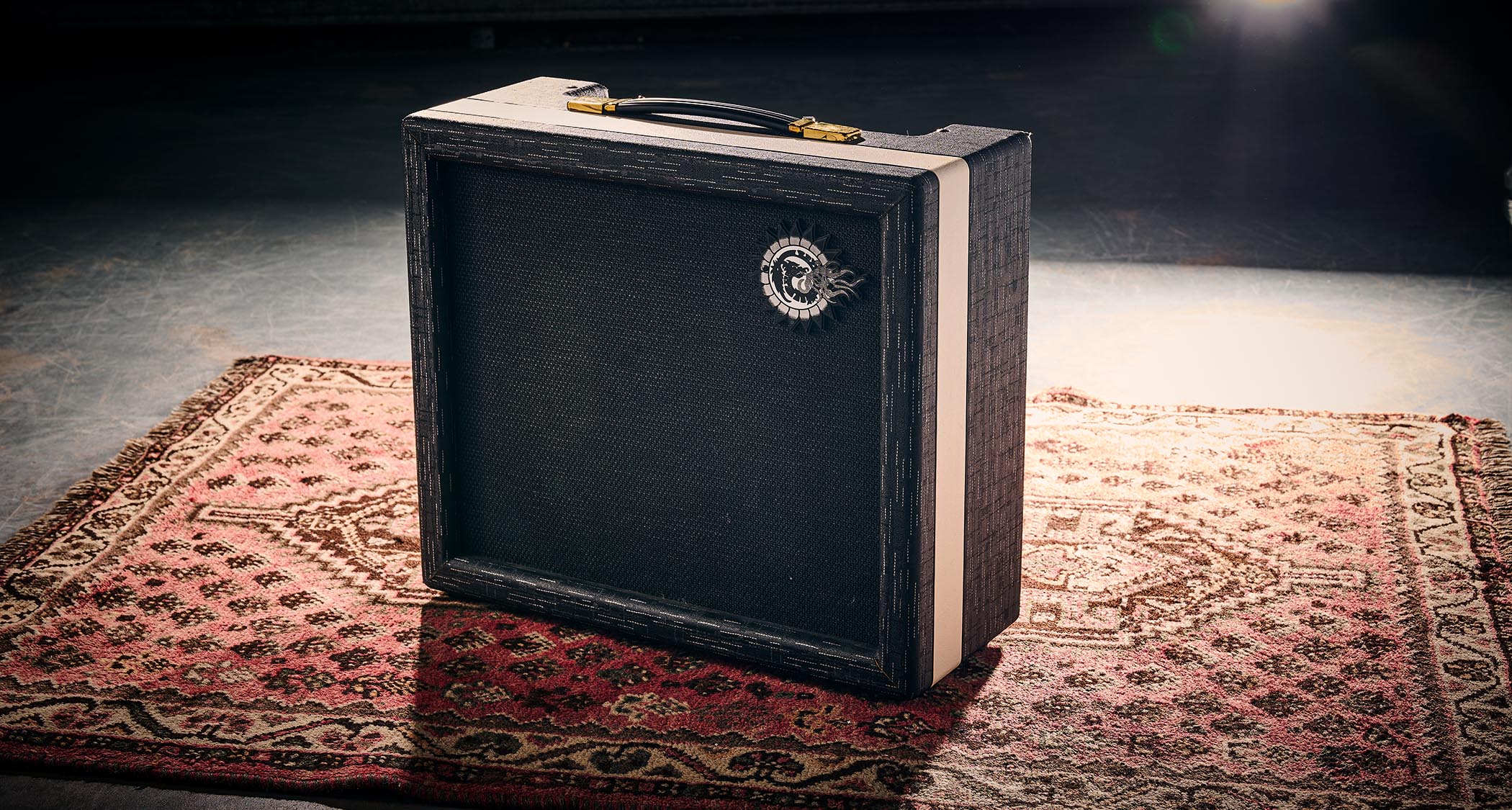
Hot-wired Marshalls are usually associated with higher gain, but Frank’s mods were designed to do the opposite. Jimmy said, “After recording the first Led Zeppelin record and creating sounds that define rock guitar, I needed an amp capable of reproducing this broad palette of sounds, including the light and the shade in the studio and a live setting.”
The exact nature of the modifications has never been made public, and Mitch Colby is understandably reluctant to divulge details. We can report, however, that Frank replaced the stock EL34s with 6550s. Mitch also describes the voicing as being somewhere in between a Super Lead and a Super Bass.
Sundragon’s Super Dragon replica features recreated transformers by Heyboer, New Old Stock GE 6550 valves, Allen Bradley and Iskra resistors and Philips ‘mustard’ capacitors. After extensive testing, custom-made Warehouse speakers were chosen for the matching 4x12 cabinet because they were the closest match to Jimmy’s Celestion Greenback G12H30s with their 55Hz resonance.
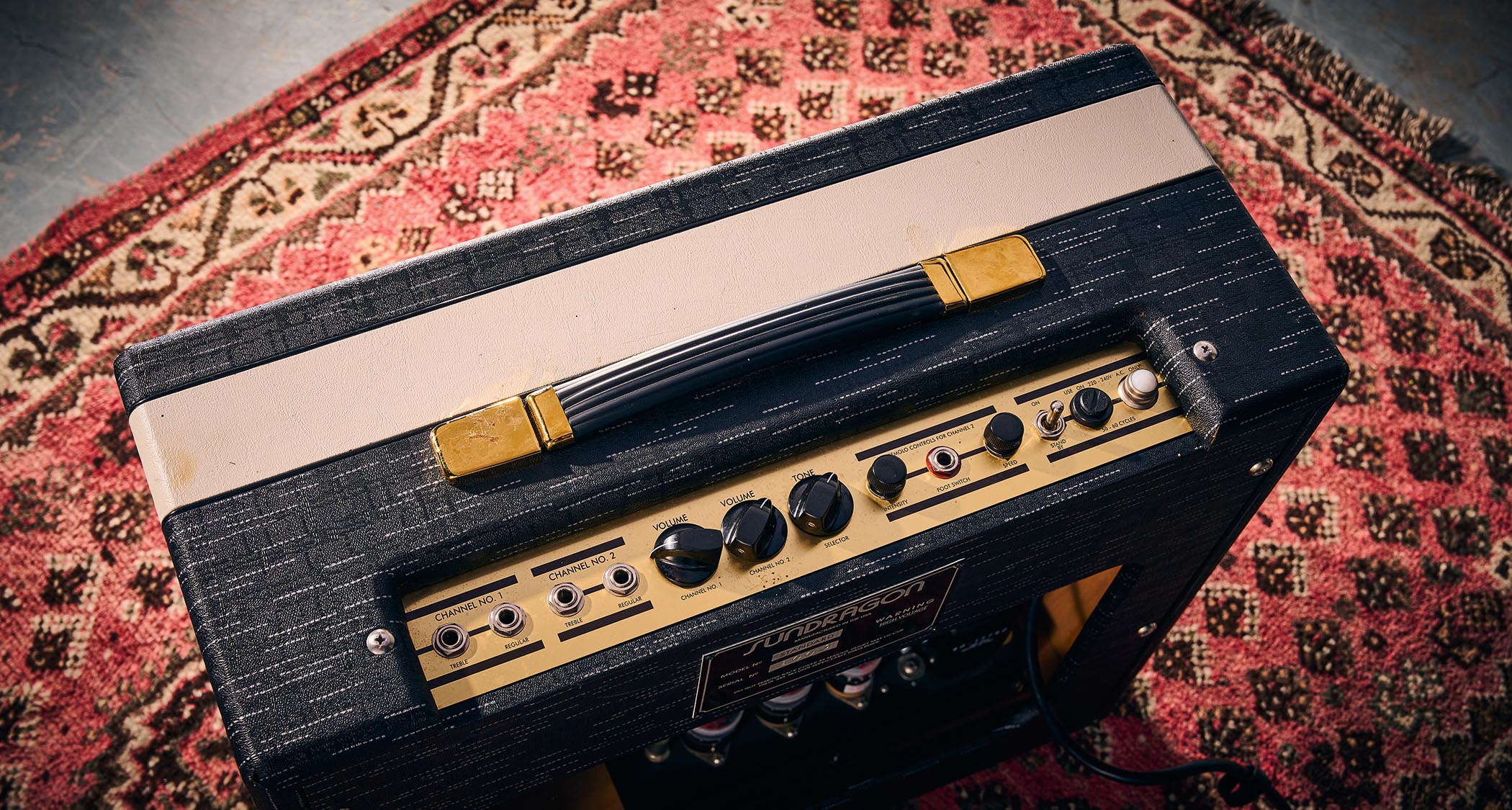
Breathing Fire
As with the Sundragon, the test guitars we used were an early 1960 Les Paul Standard and a 1961 Stratocaster belonging to the owner of these amps, Andrew Raymond. Through the matching cabinet the Super Dragon sounded breathtakingly loud and powerful.
Channel 1 is extremely bright and we were soon dialling out most of the treble and presence with both guitars. Even so, clean Strat tones exemplify the sweet and crystalline sparkle of the very finest vintage Marshalls. The Super Dragon is certainly dynamic and punchy, but not in the spiky way that some high-powered Marshalls can be.
Both channels remain clean until the volume controls are pushed beyond halfway, but sheer volume and concern for our hearing prevented us from exploring the full gain range. To tame the level, we resorted to Andrew’s Pete Cornish-modified Marshall 4x12 cabinet with all but one of its vintage Greenbacks disabled.

Channel 2 provides a fabulous contrast because it’s easier to push into a smooth overdrive and its naturally darker tone opens up the full potential of the Treble and Presence controls. The Middle control has tremendous range and is very precise in the way it allows you to sculpt the sound. The amp can roar with real gravitas in the low mids and bass that is humongous but well controlled.
Clean-up is particularly impressive, with small volume-control adjustment taking the Les Paul from ferocious to chiming cleans. When overdriven, some Marshalls steal the show by imposing themselves on guitars and players, but the Super Dragon complements, rather than dominates, and allows individual instruments to shine.
Currently listed at $22,500 on Sundragon’s website, Super Dragons are still available, and no ‘budget’ version is currently on the market. But having had access to Jimmy Page’s original and his stamp of approval, there’s no doubting the authenticity of the sound.
- Find out more at Sundragon Amps.
- This article first appeared in Guitarist. Subscribe and save.
Huw started out in recording studios, working as a sound engineer and producer for David Bowie, Primal Scream, Ian Dury, Fad Gadget, My Bloody Valentine, Cardinal Black and many others. His book, Recording Guitar & Bass, was published in 2002 and a freelance career in journalism soon followed. He has written reviews, interviews, workshop and technical articles for Guitarist, Guitar Magazine, Guitar Player, Acoustic Magazine, Guitar Buyer and Music Tech. He has also contributed to several books, including The Tube Amp Book by Aspen Pittman. Huw builds and maintains guitars and amplifiers for clients, and specializes in vintage restoration. He provides consultancy services for equipment manufacturers and can, occasionally, be lured back into the studio.
You must confirm your public display name before commenting
Please logout and then login again, you will then be prompted to enter your display name.

